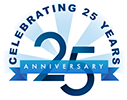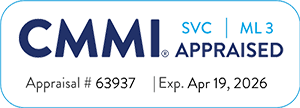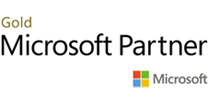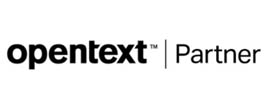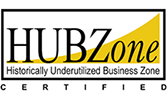Regardless of the size, scope, or complexity of the projects that we take on, the one thing we always do is produce smart solutions and deliver quality results.
We invite you to read about the results of our work.
Case Study 1: Implementing system modernization and technology migration for an Agency’s flagship loan program.Challenge: The U.S. Small Business Administration (SBA) sought to complete the last and most significant piece of their long-term modernization plan with the technology migration of all 7(a) Fiscal Transfer Agent (FTA) systems to SBA’s Data Center, and subsequently operate the suite of applications in the private cloud Select Computing, Inc. (SCi) previously implemented for their mainframe migration. The 7(a) program is the largest SBA loan program.
Solution: SCi migrated all data from the incumbent to the SBA facilities. We migrated all mainframe files to Oracle using a cloud-based pipeline implemented in Python and Precisely Connect. SCi migrated over 30 mission-critical distributed applications into a .NET on Linux. Applications that were not implemented in C# were re-implemented to conform to the target platform. We implemented 185 data ingestion pipelines for mainframe datasets. We implemented the infrastructure that hosted the development and production environment for the FTA distributed applications. We implemented a Linux, Docker, and Kubernetes based hyperconverged environment that mirrors public cloud architecture.
Results: SCi implemented a fully automated DevOps environment that includes automated testing, continuous integration, and continuous delivery into the SBA release staging environment. The FTA System Modernization and Technology Migration will help SBA gain complete control over FTA systems, build a foundation for future systems consistent with existing SBA infrastructure, and achieve economies of scale that drive optimum stakeholder value. At the same time, core financial servicing functions remain with an appropriately credentialed financial institution.
Challenge: The mission of the Department of Veterans Affairs - Debt Management Center (VA-DMC) is to collect debts resulting from an individual’s participation in VA benefit programs and VA provided healthcare in the most efficient and cost-effective manner while maintaining compassionate, high quality service to Veterans and their families. VA-DMC sought to improve service delivery to Veterans by re-engineering its business processes and providing self-service capabilities.
Solution: Select Computing, Inc. (SCi) provided an extensive and formal architectural analysis of the VA DMC’s current systems as part of a modernization planning and management effort. SCi applied TOGAF to analyze every aspect of the DMC operation and to develop the future state architecture that supports the organization’s strategic objectives. SCi provided all IT and business modernization services to support VA-DMC’s initiative to modernize two of its legacy systems and their associated databases. SCi was responsible for the redesign, development, and implementation of the new and enhanced systems.
SCi introduced the necessary infrastructure to support service-oriented architecture (SOA), microservices, and application programming interfaces (APIs) that unlock the data and functionality these mainframe systems provide. Our team worked with the VA stakeholders to develop and socialize a target enterprise architecture.
SCi provided application production and maintenance for the DMC’s third-party software applications, and associated websites. We introduced key enabling methods and technologies such as CI/CD pipelines, SOA, and microservices technologies, which integrate legacy applications with the web.
SCi implemented an interface between the mainframe legacy debt management system and Salesforce to support the development of a Veteran’s self-service user interface. We used MuleSoft to implement a service-oriented architecture that populates an intermediate database in real time. The same MuleSoft integration platform then presents an API to Salesforce to provide it access to Veteran account information.
Results: SCi provided legacy modernization and digital transformation services which resulted in faster cycle time for the resolution of Veteran inquiries and a volume reduction at the VA-DMC Call Center. We documented the architecture of the existing systems and processes; identified major pain points and bottlenecks; developed a target architecture to address the ranked priorities; reduced the cycle time of services to stakeholders; and enabled self-service for stakeholders and Veterans through the VA’s Salesforce-based front end.
Challenge: The Department of Health and Human Services (HHS) Centers for Medicare and Medicaid Services (CMS) was searching for a reliable company that could operate and manage one of the largest Oracle database environments in the world.
Solution: Select Computing, Inc. (SCi) established a dedicated facility within 15 miles of CMS and stood up a year-round 24/7 operational capability that was led by a team of certified database management experts who were leaders in their field. Using CMMI Level 3 appraised business processes, a governance model that abided by Earned Value Management principles, and proprietary database methodologies, our technology consulting team fulfilled all performance metrics and quality standards, and ensured CMS processed its pre-defined health transaction goals.
Results: SCi’s technology consultants enabled CMS to focus on Medicare and Medicaid issues without being interrupted by technology challenges such as software downtime, or data flaws. Our team maintained the CMS technology backbone so that the Agency’s personnel could focus on what is most important to them – protecting the health and welfare of U.S. citizens and providing essential human services.
Challenge: The U.S. Small Business Administration (SBA) needed a trustworthy company that could retain, manage, and develop technical expertise in legacy mainframe systems so that the Agency could extend the usage of economical mission critical software.
Solution: Select Computing, Inc. (SCi) organized and deployed an on-site technology consulting team that possessed technical expertise and relevant professional experience in key databases such as Sybase, Oracle, and MS SQL. Overseen by a distinguished SCi IT Program Manager, our team maintained and operated the SBA’s system without interruption and advised and performed key responsibilities for the mainframe production application: enhancements, 24/7 operation and maintenance, error recovery, scheduling, coordination, and program management.
Results: SCi’s technology consulting team operated a secure, reliable mission critical system that permitted the SBA to process, issue, and service small business and disaster loans in accordance with federal goals. Our team supported the full-lifecycle of all the direct and guaranty loan programs and investment programs, and the accounting that corresponded to each. In the end, SBA has improved its ability to access and share information with stakeholders, respond better to customer needs, and adapt to changing business needs.
Challenge: A Fortune 500 company based in Minneapolis, Minnesota was in the middle of a process improvement exercise to identity and select un-improvable areas which could be addressed through either an off-the-shelf software solution or a customized application.
Solution: Select Computing, Inc.’s (SCi) management consulting team dispatched key personnel to work on-site at the client’s facility and perform several business process analysis, management, and improvement projects that would help IT managers understand their technical strengths and weaknesses. By subscribing to SCi’s CMMI Level 3 processes, and applying select techniques from industry methodologies such as Lean and Six Sigma, our process consultants systematically progressed through overlapping projects within an accelerated schedule.
Results: SCi’s process consultants helped our client reduce costs and cycle times, improve quality, and most importantly, identify process-based business functions that were eligible for software automation, in part or full. We also helped our client evolve its understanding of how particular processes align to their business goals and metrics, customer desires and needs, and product development and management.
CMMI and Agile:
Apply Both for Project Success
A common concern with Agile software development at the enterprise level is that it does not scale well. There are different approaches to scaling Agile methods to address enterprise concerns. Many of the concepts such as using small, self-managing teams, work well for small projects. However, challenges increase when coordinating multiple teams working on a large-scale, complex project with numerous iterations to deliver releases that provide stakeholder value. The combination of several Agile teams concurrently executing distinct iterations can easily lead to chaos.
Download Full PDFSystems Modernization Strategies:
Best Practices for Systems Modernization
The need for systems modernization is evident in the face of an ever-changing IT landscape and emerging business needs. Within the healthcare industry, the requirement for systems modernization was evident even before the Affordable Care Act (ACA) became law. Today, additional business impetus such as the Medicaid Information Technology Architecture (MITA), continue to drive the need to modernize systems.
Download Full PDFBest Practices for Enterprise Agile Transformation
Select Computing, Inc. (SCI) can help your organization realize the benefits of Agile by guiding it through the transition from traditional software development life cycle (SDLC), such as the Waterfall, to Agile. SCi is experienced in Enterprise Transformation, establishing organizational best practices for Agile methods, and managing cultural change throughout the project, program, and portfolio levels of an organization.
Download Full PDFCMS Emerging Edge Forum (CEEF)
Agile frameworks rely on Product Owners to enact Risk Governance within the project or program. Therefore, it is critical that Product Owners follow a common Risk Governance approach that pervades throughout projects and programs to enable portfolio risk management. By applying CMMI, the organization can manage risk.
Download Full PDFSystems Modernization Strategies
SCi Modernization Factory outsource modernization activities that rely on transitional technologies. We set up our Modernization Factory for Agile Modernization and can help you establish a CI/CD environment and implement DEVOPS.
Download Full PDFSection 508 of the Rehabilitation Act, as amended by Congress in the Workforce Investment Act of 1998, requires that electronic and information technology used by Federal agencies be accessible to individuals with disabilities.
Select Computing, Inc. (SCi) is committed to making its Information and Communication Technology (ICT) accessible to individuals with disabilities by meeting or exceeding the requirements of Section 508 of the Rehabilitation Act of 1973, as amended by 29 U.S.C. 794d - Electronic and Information Technology (EIT). Section 508 requires agencies, during the procurement, development, maintenance, or use phases of ICT, to ensure that individuals with disabilities have access to and use of ICT information and data comparable to the access and use afforded to individuals without disabilities (i.e., “ICT accessibility”), unless an undue burden would be imposed on the agency. The Section 508 standards are the technical requirements and criteria used to measure ICT accessibility. SCi is in compliance with Section 508 at 36 CFR Part 1194 Electronic and Information Technology Accessibility Standards (Section 508 Standards).
SCi is committed to complying with all statutory requirements to ensure that web content is more accessible to people with disabilities. We make a concerted effort to meet the standards of Web Content Accessibility Guidelines (WCAG) 2.0, and Section 508 of the Rehabilitation Act of 1973, as amended.
We self-certify our compliance with Section 508 technical standards through the completion of a Voluntary Product Accessibility Template (VPATTM) for each ICT product we develop. VPATs are developed using the VPAT template from https://section508.gov/sell/vpat - opens in a new window current at the time of submission. SCi complies with the latest technical standards defined in 36 CFR Part 1194.
Detailed information about the GSA Government-wide IT Accessibility Program is found at: www.Section508.gov - opens in a new window

